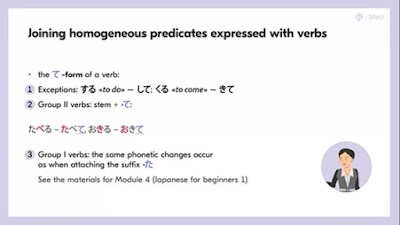TUGAS 3
LANGUAGE LEARNING
MATA
KULIAH PEMBELAJARAN BAHASA INGGRIS BERBANTUAN KOMPUTER
In this 2nd week, the material what I learnt is to
sophisticate and diversify our speech with new grammar structures.
·
And in the speaking part, we're going to talk
about weather and nature. You will add a new verb to your vocabulary today, the
verb, なるTo become. This verb means transition from one state or status to
another state or status. So, it combines with
nouns, and then, such nouns are used if the particle indicating an indirect
object.
For the example:
あつくになります (atsukuninarimasu): for the polite
speech
あつくなる (atsukunaru): for the casual style
or non-formal
· In this section, we know how to derive an adverb from an い (i) adjective. And we have already discussed that い adjectives
are similar to verbs because when used as a predicate, they can have a past
tense form. The past tense form is derived by attaching the suffix, かった (katta) To the adjective stem in formal written style, for instance:
すごい/です (sugoii): great
すごかった (sugokatta): was great
·
As you probably have understood by now, a lot of meanings in Japanese are expressed
with suffixes and auxiliary parts of speech. So, for example, the suffix, そう (sou) It is attached to the い adjective stem, means
a guess about an object's or person's quality based on their appearance. For
example, [おいしい/oishii(Tasty) and, おいしいそう/oishiisou (Looks tasty).




Komentar
Posting Komentar